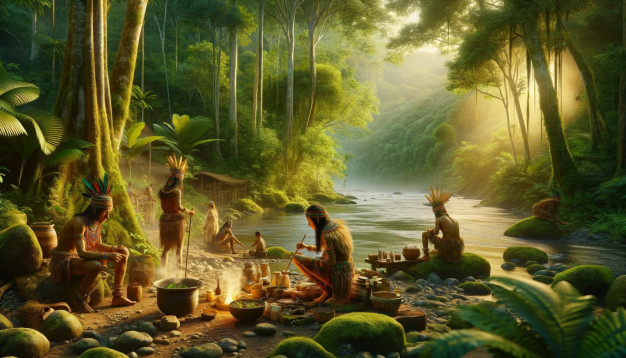Emberas of Panama: Roots & Rituals
Explore the Emberas' vibrant culture, from unique traditions to spiritual practices.

Introduction to the Embera People
Historical Overview
The Embera, often referred to as the Chocó, boast an ancestry that spans centuries, originating from the Darién Gap—a region straddling Panama and Colombia. Despite European contact in the 16th century, they managed to preserve much of their cultural heritage, which is a testament to their resilience.
Geographic Distribution
The Embera predominantly dwell in Panama’s Darién Province, along riverbanks and within the dense rainforest. Some have migrated to more urban areas, yet a significant number remain in their ancestral lands, living in harmony with the natural world.
Cultural Identity of the Embera
Language and Dialects
The Embera language is alive and kicking, comprising various dialects such as Emberá-Drúa and Emberá-Katío. This linguistic variety serves as a cultural anchor, uniting the Embera across different regions.
Traditional Clothing and Body Art
Traditional garb is a feast for the eyes, with women donning vibrant, flowing skirts and men sporting loin cloths. Both genders embellish their bodies with jagua, a natural dye, creating intricate patterns that narrate personal stories and cultural lore.
Social Structure and Community Life
Family and Kinship
At the core of Embera society is the family unit, characterized by strong bonds and a communal ethos. Kinship extends beyond bloodlines, fostering a supportive environment where everyone has a role to play.
Roles and Statuses in Embera Society
Hierarchy and status within the Embera community are nuanced, with respect given to elders and shamans. These roles are crucial, guiding the community with wisdom and spiritual insight.
Spiritual Beliefs and Practices
Connection to Nature
The Embera’s spirituality is intricately linked to the environment, with a profound reverence for all living things. Nature isn’t just a backdrop; it’s a living, breathing participant in their cosmology.
Rituals and Ceremonies
Life’s milestones are celebrated with a panoply of rituals and ceremonies that often involve the entire community. These events are vibrant, imbued with music, dance, and the wisdom of ancestral spirits.
Art and Craftsmanship
Embera Basketry and Carvings
The Embera are renowned for their exquisite basketry and wood carvings, each piece an embodiment of their cultural narratives and the surrounding biodiversity. These artifacts are not only functional but also artistic expressions of the Embera worldview.
Music and Dance Traditions
Music and dance are the soul of Embera festivities. Flutes, drums, and the rhythmic swaying of bodies tell tales of history, mythology, and daily life, keeping their heritage pulsing through each generation.
Contemporary Challenges
Land Rights and Environmental Issues
The Embera face ongoing struggles with land rights and environmental degradation. Encroaching development threatens their territory, a plight that could upend their way of life and the delicate ecosystem they’ve so diligently preserved.
Preserving Culture in a Modern World
The digital age is a double-edged sword, offering avenues for cultural promotion while simultaneously eroding traditional practices. The Embera walk a tightrope, balancing the preservation of their identity with the realities of a rapidly changing world.
Engaging with Embera Communities
Responsible Tourism
Tourism done right can be a boon for Embera communities, offering economic benefits and cultural exchange. However, it requires a thoughtful approach that respects local traditions and promotes sustainable interaction.
Supporting Embera Artisans
Purchasing authentic Embera crafts is more than just acquiring souvenirs; it’s an act of support for their artistry and a means to ensure the continuation of their cultural legacy. By choosing to invest in the genuine article, one bolsters the community and takes home a piece of Embera soul.